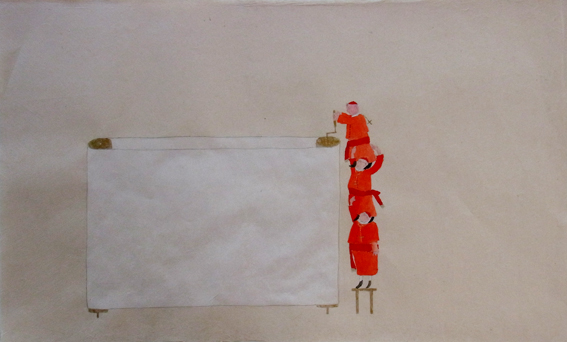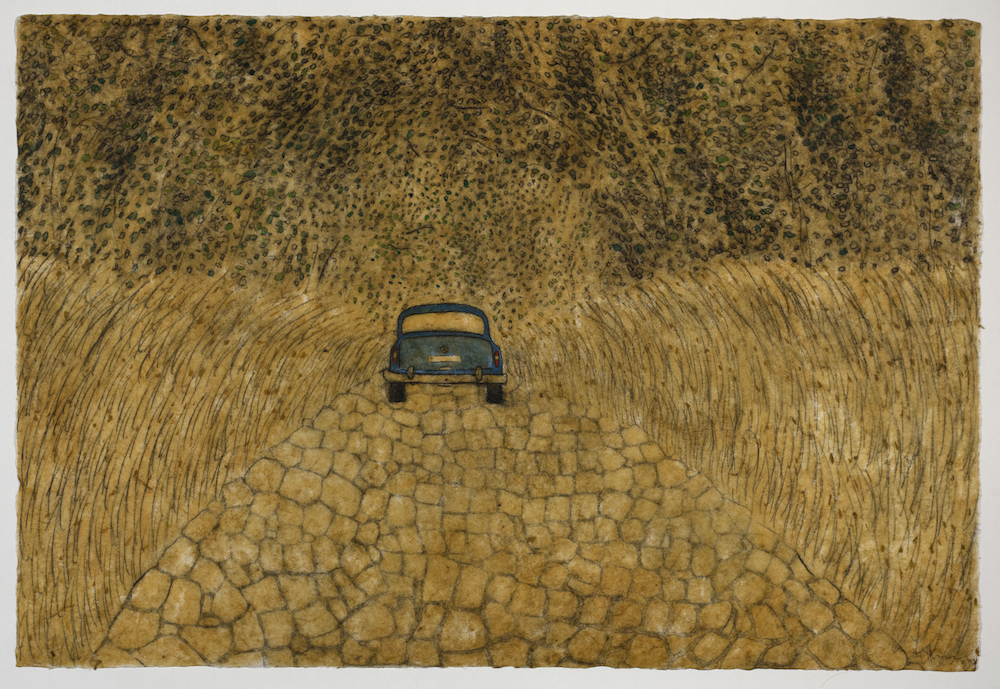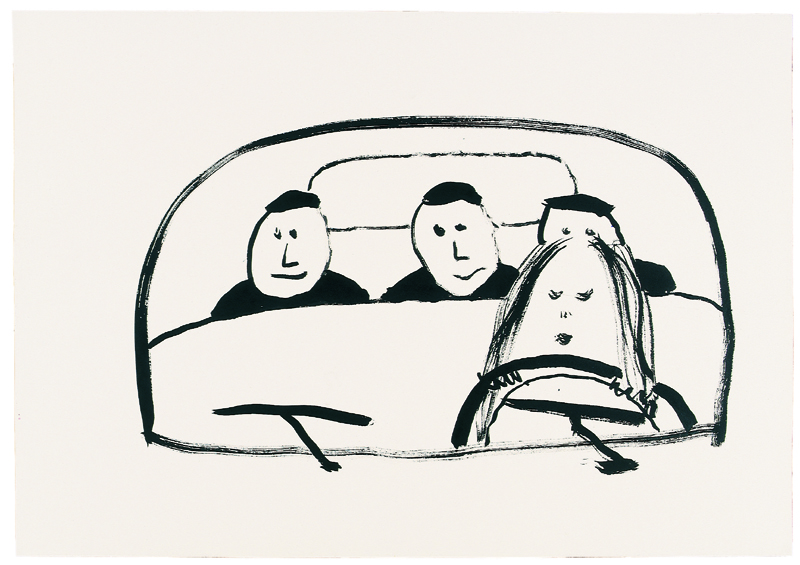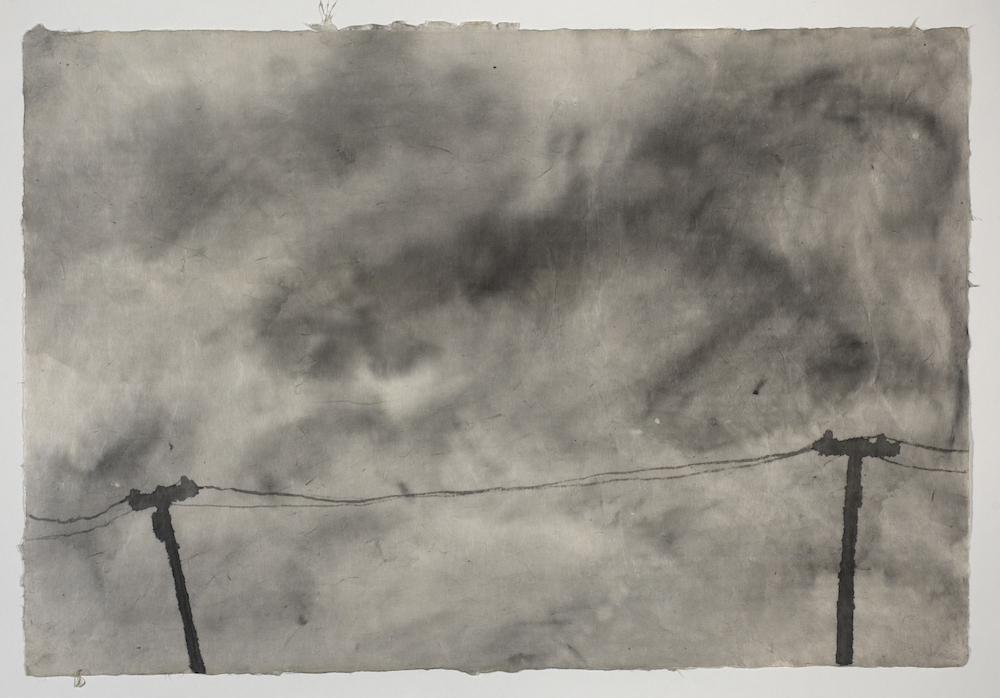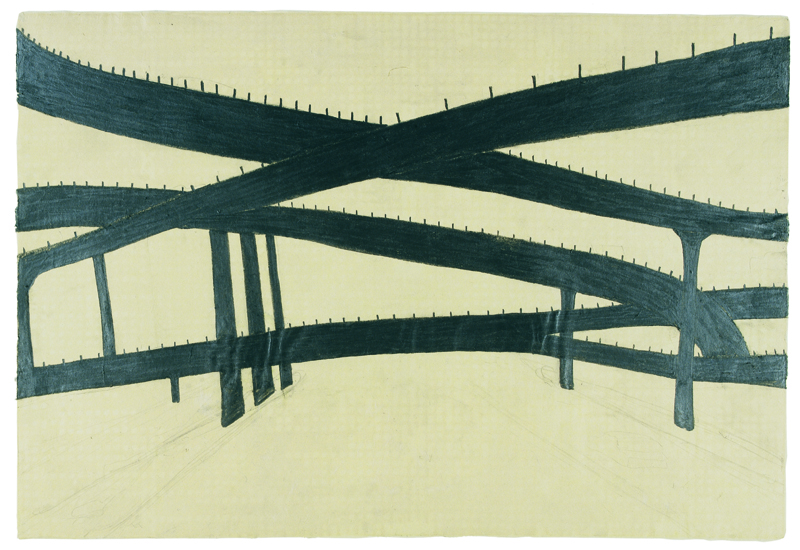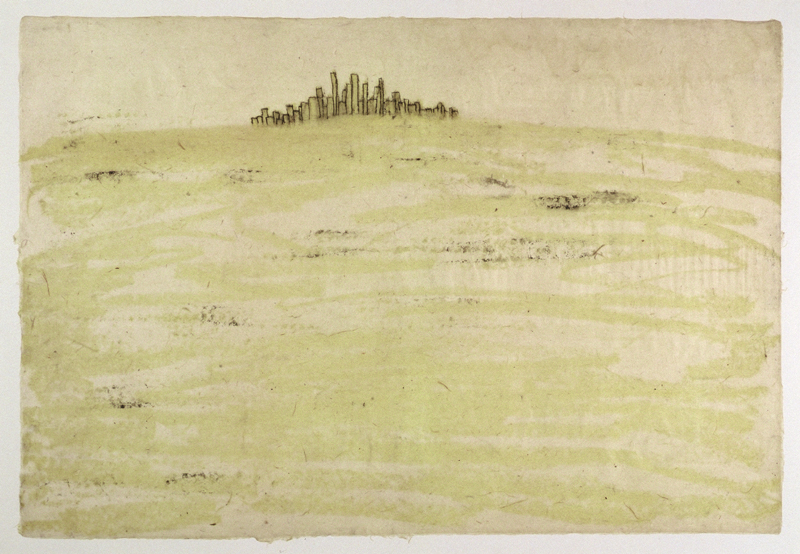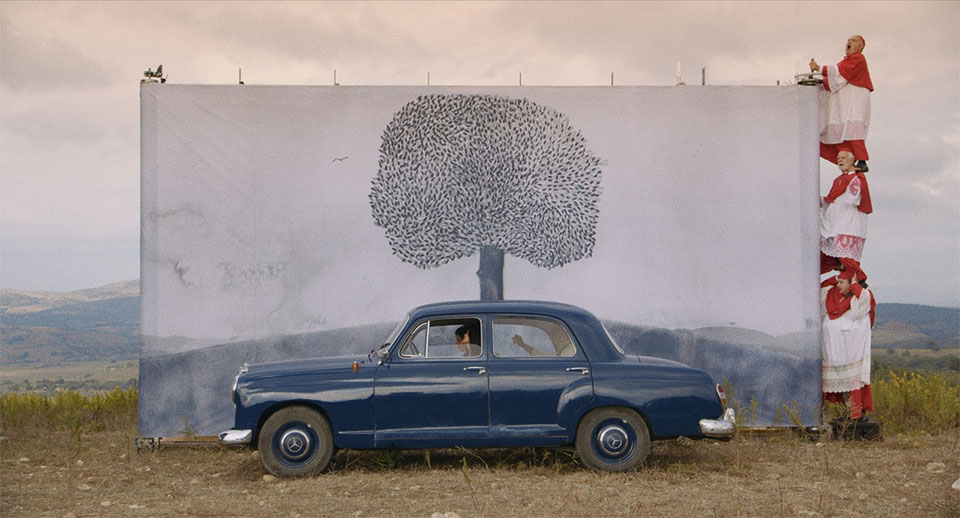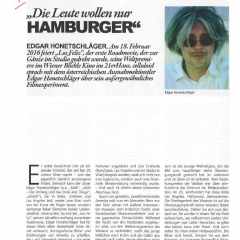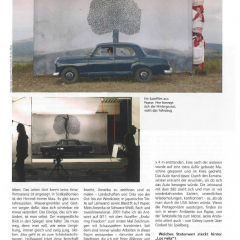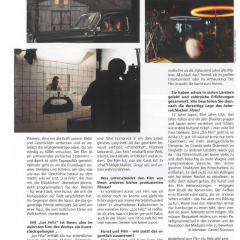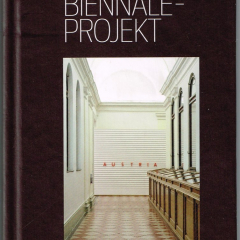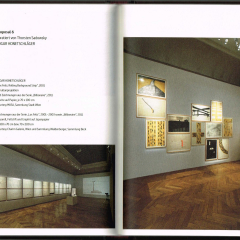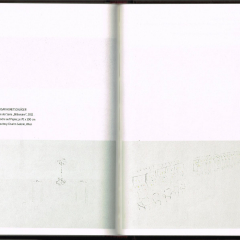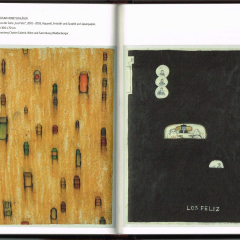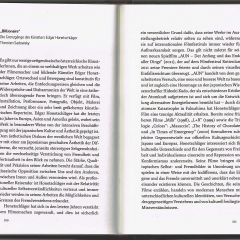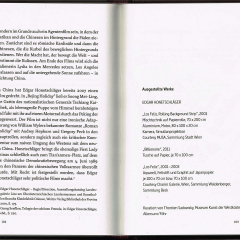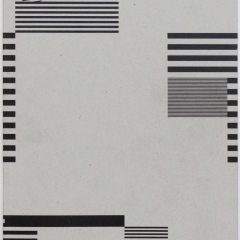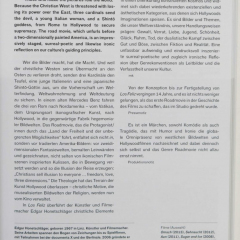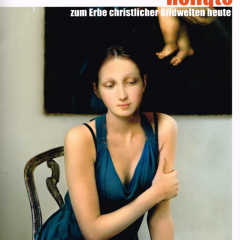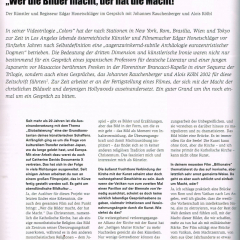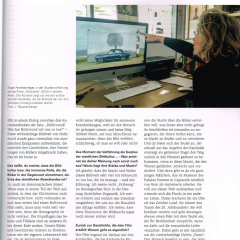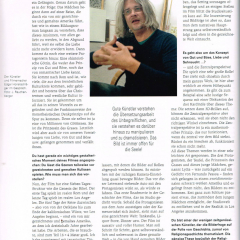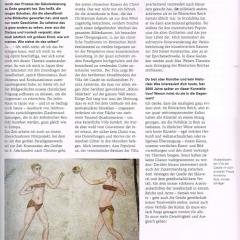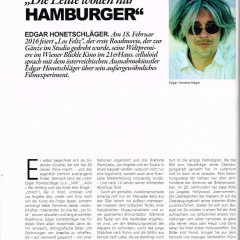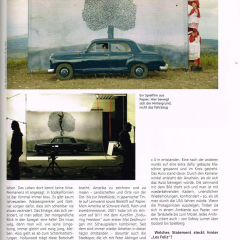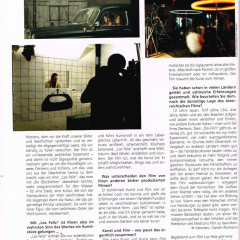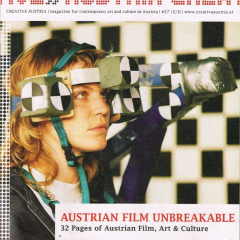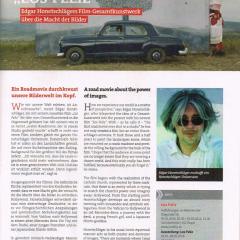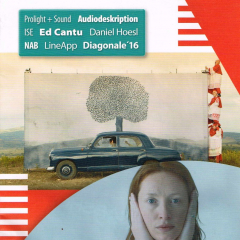feature film, ROME / LOS ANGELES / VIENNA 2016, 105 min, DCP 24fps / 1:1,85 / Stereo / 105’ / color / english, german, chinese, italian subtitles available
This project has its own elaborated website. Please visit www.losfeliz.at for in depth information including all credits. Film available at https://vimeo.com/ondemand/losfeliz
LOS FELIZ is the first road movie ever shot in a studio. It took 14 years to make the movie. All backgrounds – paintings of a size of 16 by 4 meters each were mounted on a rolling background machine (developed for the film) that would create the illusion that the car the protagonists use to get from Rome (the former center of picture production) to Los Angeles (the current center of picture production). America from East to West was represented by those paintings that served as rolling backgrounds. When the protagonists stopped over they ended up in drawn sets (hundreds of single drawings). For a Pdf of all images scroll further down please.
This film is the final chapter in a series of drawn two-dimensional sets brought alive by professional actor and turned into films. In art venues the sets were attached to walls combined with video projections of the films that had been shot using them. The other chapters being ENDURING FREEDOM 2001, THE SCENT OF SNOW 2003, TARZAN 2011 and LONGING 2012.All those pieces reflect my questioning the concept of central perspective, a mathematical concept that fools the eye indicating false depth and regrettably having become the lone standard reduces our perception since Masaccio succeeded in inventing it. The suprematists in the early 20th century thought of four, five, six and seven dimensions. How come we got stuck with three? How come it became the only one way of seeing and perceiving the world we depict? The Byzantines had invented the reverse perspective that we cannot detect as what it is anymore. Perceiving the central perspective realised in a fresco or a canvas is something that is not given to us by birth, it needs to be learned as i point out in my film Masaccio. A Byzantinian would not have been able to decipher it (to see it), neither did Asians or people from other parts of the world before Westerners reached their shores. See Edwin Abott Abbot in his book Flatland and Pavel Florensky for in depth treatment. The 3D principle was carried on into the medium of film which keeps on trying to evoke fake depth and later on into the digital world. Please find an essay by the Viennese Art Historian Christina Natlacen in German language below.

One out of 18 paintings 16x4m (51×13 feet) used as rolling backgrounds in order to make the the car with the protagonists drive across a drawn and painted America.
THE STORY
Lydia, a museum guard, wants to escape the morbidity of the Rome. Kaya has come to the eternal city from Japan in order to fathom the Western principles of ‘good and evil’ as well as ‘romantic love’ – concepts alien to her culture. She leads Lydia to Salvatore, a distinguished middle-aged man who lives in a church in the countryside. Soon Lydia is convinced that Salvatore holds the key to her desires: fame. Salvatore is being sent on a secret mission by the Vatican. He should liquidate those who threaten the supremacy of the Christian world. As the culprits are to be found in the West the three characters go on a five-day road trip across a staged America. In the new world Lydia turns into a perfect beauty who everyone desires. But wherever they go Salvatore leaves a trace of blood behind. In the midst of their journey they are being accused of having carried out terrorists attacks. On the fifth and last day of their journey they reach the desert, where the threat to the West, the Chinese, who have succeeded to make a better deal with Salvatore, force down Western imagery and exchange it for Chinese ones. Lydia, excited in the beginning of the trip, by now drawn off by nothing but representations of reality, plots with her guardian angel Kaya and they kill Salvatore. They escape to Hollywood where Lydia gets to meet her alter ego: an unsuccessful actress doing a Judy Garland act at celebrity’s kids’ parties. Salvatore resurrects as a plastic surgeon specialised in vaginal rejuvenation and Kaya vanishes as she has fallen for what she is not supposed to feel: Love.
‘Those who make the pictures rule the world’ is the proposition to a story that connects the former center of picture production ROME (VATICAN = the church commissioning artists to translate their contents into paintings) and the one of today: LOS ANGELES / HOLLYWOOD. Like the genesis LOS FELIZ has a seven-day structure. The first day of the journey takes place in the eternal city of Rome and its surroundings, the last day in Los Angeles. The five-day road trip in between was filmed in a studio. By means of huge rolling backgrounds (painted by the artist with Japanese ink) and drawn sets the classic iconography of American road movies is being laid out. LOS FELIZ packs the vastness of the North American continent into a film studio. A fairy tail, both comedy and drama, that caricatures the omnipresence of Western imagery and Hollywood pictures with humor and irony, although it does not forget to make fun of itself, the illusion film and the genre road movie.
cast
PAULINE ACQUART YUKIKA KUDO PHILIPPE SPALL & TECO CELIO COSIMO CINIERI ANTONIO SALINES
&
JEAN JAMES SUTTON RAFAELLA BISCAYN ROBERT CHIONIS EDWARD CLARKE KRISTINA DECKER YU FANG STEVE GANDER JONATHAN GLEW STEFANIE NUR ZACHARY POWELL JEAN JAMES SUTTON LINSEY THURGAR BENEDICT UY LINSEY THURGAR
cinematography PIERGIORGIO BOTTOS, DANIEL HOLLERWEGER
gaffers KATOU MASAAKI, DOMINIK DANNER
sound recordist CLAUS PITSCH
sets drawn by EDGAR HONETSCHLÄGER
art directors: Conrad Reinhardt, Elisabeth Vogetseder
music consultant Mike Harding
music Peter Ablinger, Florencia di Concilio
editors YORGOS MAVROPSARIDIS, STEFAN FAULAND, EDGAR HONETSCHLÄGER
producers EDGAR HONETSCHLÄGER, YUKIKA KUDO, ROBERT SHULEVITZ
production company EDOKO INSTITUTE FILM PRODUCTION
written and directed by EDGAR HONETSCHLÄGER
supported by AUSTRIAN FILM INSTITUTE, VIENNA FILM FUND, ORF, KULTURLAND OBERÖSTERREICH, EDOKO INSTITUTE
Please find a trailer and the film below:
making of
LOS FELIZ EXHIBITION DOCU MACRO TESTACCIO ROMA 5’
LOS FELIZ – Interview with Peter Kirby ad Rosanna Albertini 12’
A LOS FELIZ Newspaper was printed containing the theoretical background for the movie. Please download below
LOSFELIZ_ZEITUNG_2-3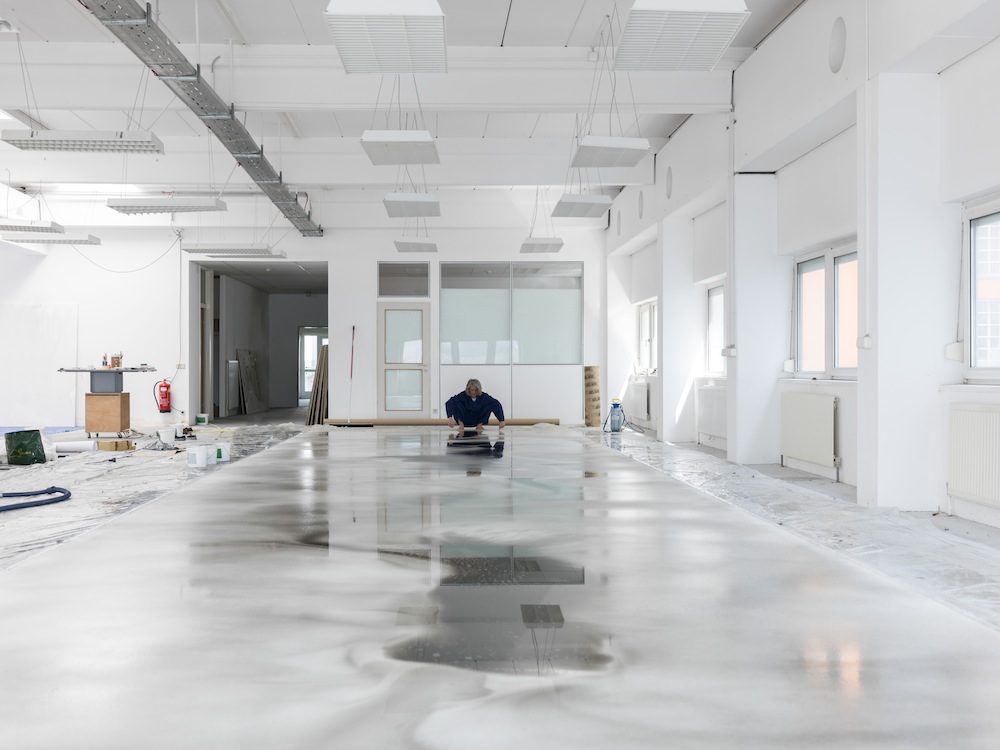
photo OSCAR SCHMIDT
Below an almost full catalogue of all the paintings and drawings made for the movie:
LOS-FELIZ-klein-1